L6 - Introduction to tissue mechanics, mechanotransduction & fibrosis
1/23
There's no tags or description
Looks like no tags are added yet.
Name | Mastery | Learn | Test | Matching | Spaced |
|---|
No study sessions yet.
24 Terms
What is Youngs Modulus (E)?
measure of stiffness or elasticity (how much force it takes to deform something)
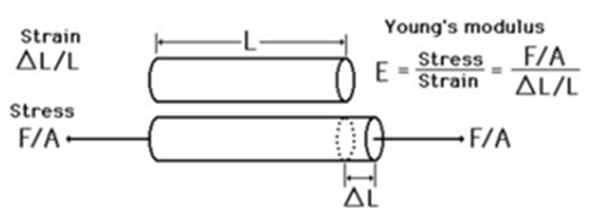

What are mechanical properties of tissues matched to?
The function of the tissue
eg need robust tissues for protective barriers (such as skin)
Why are some tissues soft?
o Useful to be able to remodel
o Conservation of resources – all tissues don’t need to be extremely stiff and well protected if they are naturally protected
o Useful for brain to be soft – for development
What is tissue comprised of?
Cells and ECM (three-dimensional network of extracellular macromolecules found in multicellular organisms.)
What does the ECM define?
mechanical properties of our tissues.
What do cells communicate with and do with this information?
Cell communicate with ECM and surroundings
Biochemical signals and cells can feel surroundings
Cells can change environment – release proteins ect
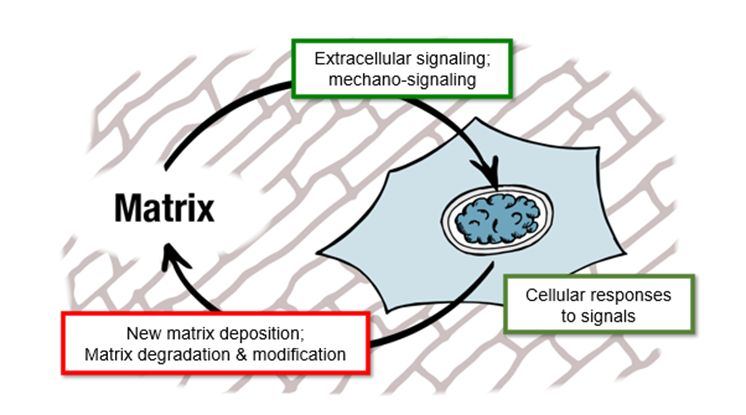
What is regulated to maintain a steady state?
‘Homeostatic’ systems are actively regulated to maintain a steady state.
Homeostasis occurs in healthy adult tissue
Not necessarily in development, ageing, disease
Have to set up system in development
Breaks down in disease and aging
Which cell behaviours can be controlled by stiffness?
Cell morphology
Contractility
Proliferation
Apoptosis
Movement
Differentiation
How does stiffness control cell morphology?
Cells spread more on stiffer substrates
Feel stiffness and change shape
Bigger and more spread out
How was cell morphology on stiff tissues determined?
Determined using Hydrogel:-
A synthetic polymer gel on which cells can be cultured.
It can be made soft or stiff by varying the density of crosslinks (by changing concentration)
Often made of polyacrylamide (like a gel for SDS-PAGE).
What is contractility?
o How hard the cells are trying to deform their surroundings
o Cells can only ‘feel’ stiffness by deforming their surroundings
How does stiffness control contractility?
Cells pull harder (are more contractile) on stiffer substrates
Reaches a plateau as cell can only produce so much force
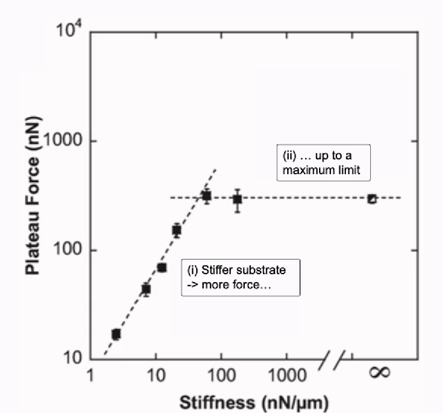
How does stiffness control proliferation?
Cell growth is faster on stiffer substrates
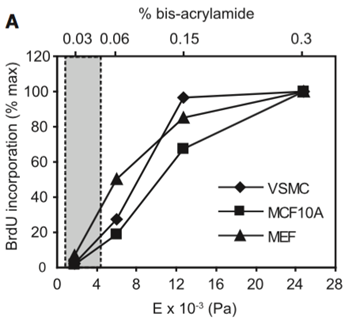
How does stiffness control apoptosis?
o Apoptosis is lower on stiffer substrates
o Greater rates of cell population increase (cells are proliferating faster and apoptosing more slowly)
How does stiffness control movement (durotaxis)?
Cells migrate towards stiffer region

How does stiffness control differentiation?
Stiffness can direct cell fate
o Soft substrates drive differentiation to soft tissue types (e.g., fat) (adipogenic)
o Stiff substrates drive differentiation to stiff tissue types (e.g., bone) (osteogenic)
o Cell choses based on mechanical properties of its surroundings
SUMMARY - concept 1 (Mechanical properties are integral to healthy tissue function.)

How do cells respond to mechanical signals?
“Mechanotransduction” is the conversion of a mechanical input into a biochemical signal.
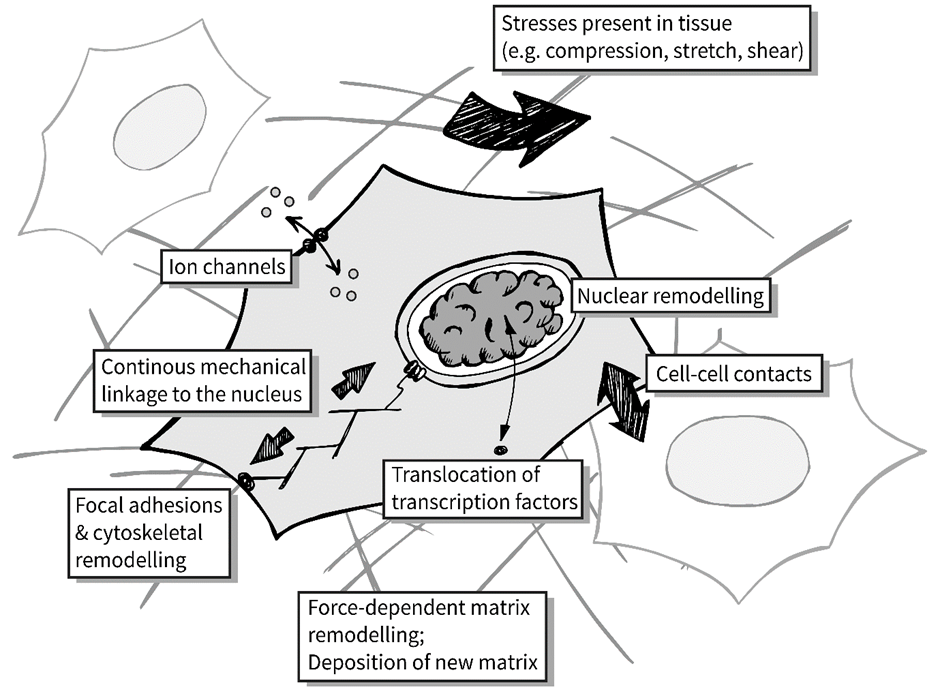
What do cells need a mechanism of to ‘deform their surroundings to feel stiffness?
o Force generation (acto-myosin contraction)
o Force transmission (cytoskeleton)
o Mechanosensing (conversion mechanical into biochemical signals)
What are key proteins for adhesion complexes?
Integrins
Actin
Myosins
Talin
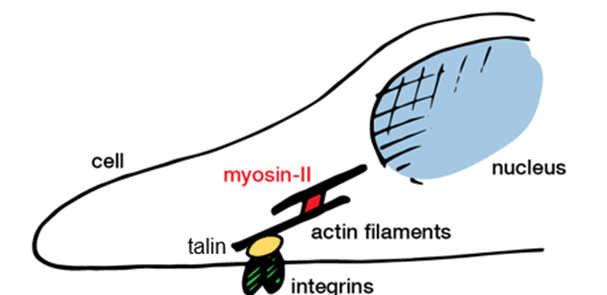
What are integrins?
membrane binding receptors that form focal adhesion complexes that tether the cytoskeleton to the matrix.
What is actin?
polymeric filaments; major component of the cytoskeleton; growth of filaments drives cell spreading.
What are myosins?
‘molecular motors’ pull against actin filaments, causing contractility.
What is talin?
a protein that deforms when pulled on, reveals cryptic sites, activating a signaling cascade (conversion into biochemical signal)